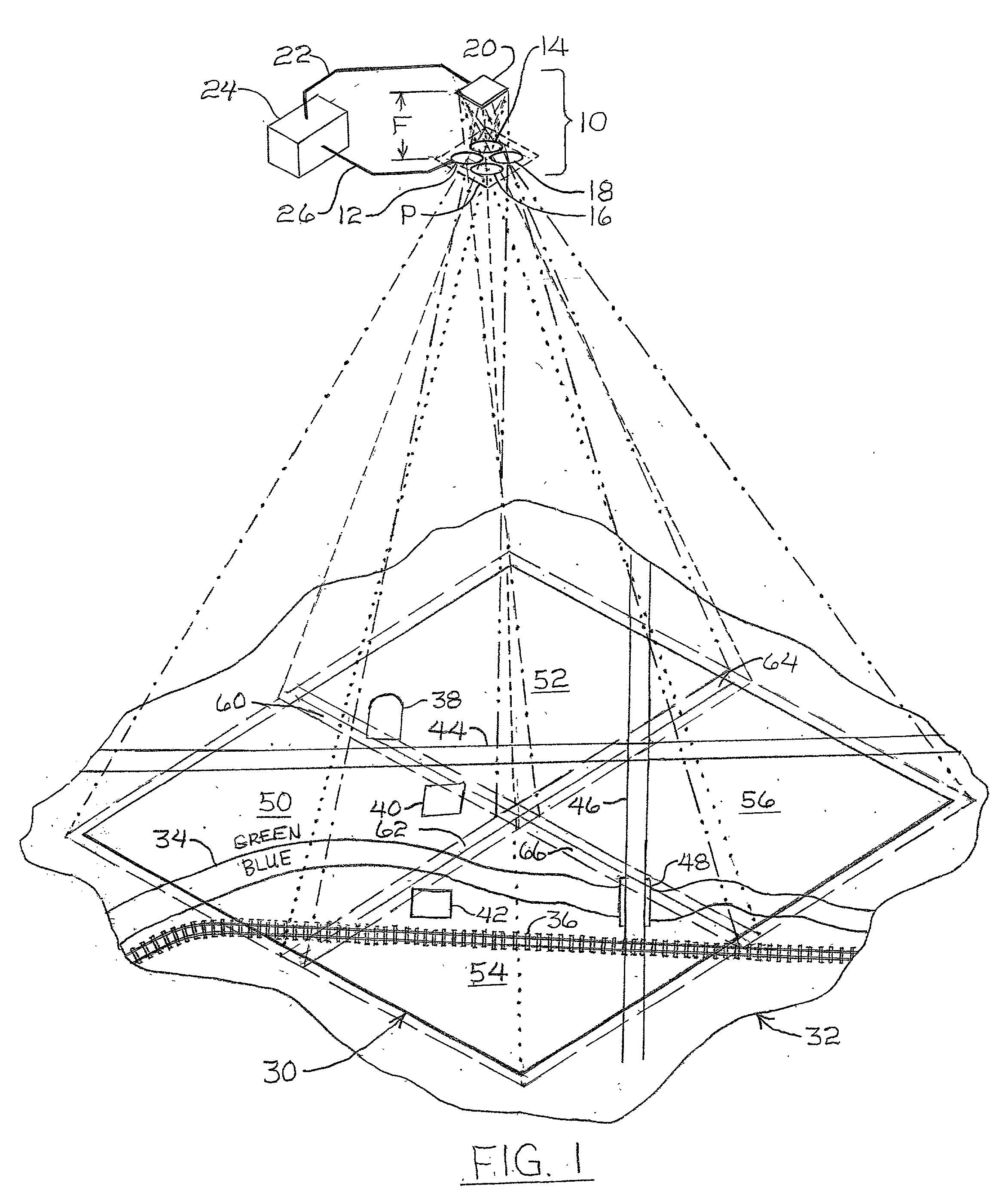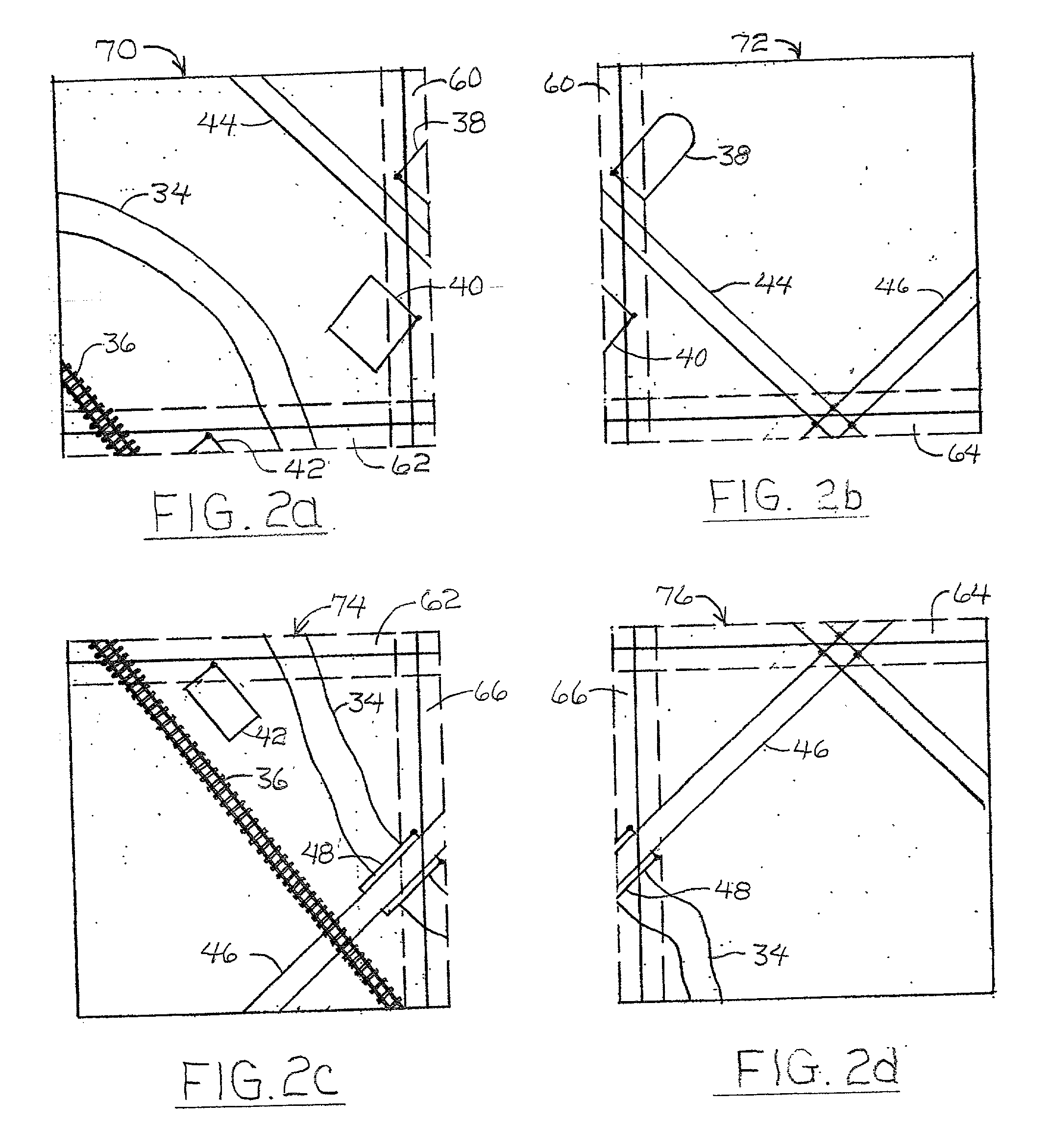The resulting picture of the mountain, which, when processed and printed, can be held in a person's hand and pasted onto a page in a
scrap book, may appear to be sharp and clear, but it may not be possible to discern an individual house built on the side of the mountain in the picture because the house is too small.
Expanding or "blowing up" the picture to a larger size might make it possible to discern the house, but it may still be impossible to see the
doors, windows, roof lines, and other details of the house because the resolution of such fine details just might not be in the picture.
Such wide angle lenses, sometimes called "fisheye" lenses, are well-known, but they also distort the image--magnifying portions in the middle and diminishing marginal portions of the image.
Resolution obtainable by digital cameras is also limited by the sizes of
photodetector arrays.
Therefore, such
signal output might enable one to discern that there is something in the resulting mountain picture where the house is located, but it would not be able to produce a recognizable house shape, much less details of
doors, windows, roof lines, and the like.
Furthermore, no amount of enlargement or "blowing up" of the picture could produce more detail.
For example, if in taking an aerial picture of a city, all of the light reflected from a
city block is focused on one
photodetector, it may be possible to discern the block in the resulting picture, but it would not be possible to discern individual buildings, back yards, alleys, cars in driveways, and the like.
A problem faced by
digital camera manufacturers is that large
photodetector arrays, to the extent they are commercially available, are not inexpensive.
Therefore, most camera designers and manufacturers are limited to commonly available photodetector arrays.
Rectangular array sizes of about 1,000.times.1,000, i.e., about 1,000,000, photodetectors are now fairly common and readily available, while arrays of 5,000.times.5,000, i.e., about 25,000,000 photodetectors, or more are considered to be "large" and expensive.
Several high-end camera manufacturers do make digital cameras with 10,000.times.10,000 arrays, i.e., about 100,000,000 photodetectors, but the costs of such cameras are prohibitive fore most purposes.
Besides cost, there are other limitations of such "large" array digital camera, especially as compared to analog cameras using film, which can generally achieve better resolution than conventional digital cameras.
For example, radiometric performance, i.e., gray scale and / or color resolution of analog film cameras generally not as good as that of digital cameras.
On the other hand, large arrays of photodetectors often have defective
detector elements that produce defective images.
Also, their
large size, and, especially the time it takes to read an image of a
large array of photodetectors, are all significant problems.
The read-out time alone can reduce their usefulness to situations in which there is no movement in the object of between the object and the camera, because such movement before all the electric signals from all the photodetectors in the array that can be read could introduce distortions in the resulting picture or image.
Further, such large detector for
large format photogrammetry applications have to be nearly flawless, i.e., few, if any, bad photodetectors, because there is no redundancy and bad photodetectors in the array will leave flaws in images being acquired by the
detector array.
The requirement for such flawlessness puts further pressure on cost of such cameras.
Other methods to overcome these limitations for acquiring larger format images of large area objects, such as
macro- and micro-scanning cameras, also take time to create the image.
The problem with such "push-
broom" scanning is that it is difficult to know the camera path accurately, which results in a notorious lack of accuracy in stereo measurements or menstruation in the resulting images.
As the aircraft or
spacecraft flies over the object, each
detector array produces a "push-
broom" strip of imagery, but these "push-
broom" strips are not geometrically independent, since the
multiple image lines are collected simultaneously with the same camera.
A problem is that each image line has a separate perspective center, so the resulting composite image of the object has many perspective centers.
A large-image format can be assembled from the sub-images, but accuracy can suffer because of differences among the multiple cameras, and it has the problem of
multiple perspective centers--one for each camera.
 Login to View More
Login to View More  Login to View More
Login to View More 


